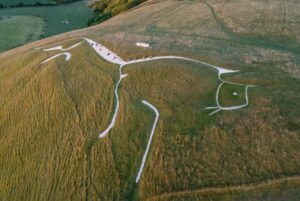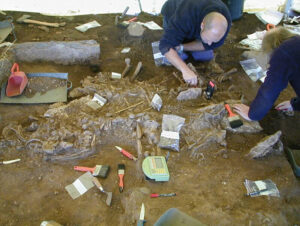Picture the effort and inconvenience of traveling with a pet. Now replace a five-hour flight with weeks in an open longboat, and switch out the terrier for a shaggy Scandinavian horse which is — we can safely assume — not happy about the naval life.
Got a good image in your head? According to research recently published in the journal Plos One, that’s exactly what life was like for 9th-century Vikings during their famous raids of the British Isles.

An Icelandic horse. Photo: Shutterstock
Scientists previously believed that Vikings stole horses, dogs, and pigs from the villages they sacked during their invasions, the BBC reported. But excavations of burial mounds in Heath Wood, Derbyshire indicate that Scandinavians brought such animals along with them.
Researchers drew their conclusions after analyzing the strontium in the cremated bone remnants from the burial mounds. Strontium moves from rocks, soil, and water into plants, and from there into the bones and teeth of animals.
According to the University of Georgia’s Center for Applied Isotope Studies, “[strontium] isotope ratios in soils, rocks, and waters vary widely in nature…the assumption is that the isotope values for strontium in bone and tooth enamel will reflect those in the portion of the biosphere in which an individual lived. Thus, strontium isotope composition provides links to the land where food was grown or grazed.”
Boon companions
The new findings reshape the popular imagery that most of us have of sailing Vikings. Add dogs, horses, and other animals into the mix, and life on a Viking longboat gets a little more interesting.
“Horses back then were smaller than horses are now, which could have made the journey a little bit more accommodating, but it was still probably wet and uncomfortable,” explained the paper’s lead author, Tessi Loffelmann.
Horses and dogs sailed with Vikings to Britain, say scientists https://t.co/PRrJcVJIgT
— BBC News (World) (@BBCWorld) February 1, 2023
“The Bayeux Tapestry depicts Norman cavalry disembarking horses from their fleet, but this is the first scientific demonstration that Viking warriors were transporting horses to England 200 years earlier,” added Julian Richards of the University of York. He is the co-director of the excavations.
Not only did Vikings bring animals with them, but it appears that the warrior-farmers had emotional attachments as well. Excavation of the mounds revealed that the cremated remains of animals and humans were buried together, suggesting there was more at work than simple utility.
“They were treated more like companion animals rather than just for economic purposes,” Loffelmann said. “I find it really touching and it suggests we underestimate just how important animals were to Vikings.”
The barrow cemetery at Heath Wood is the only known Viking cremation cemetery in the British Isles. Most researchers believe it to be the result of an invasion that took place in A.D. 873. Archaeologists have excavated the site since the 1850s.






